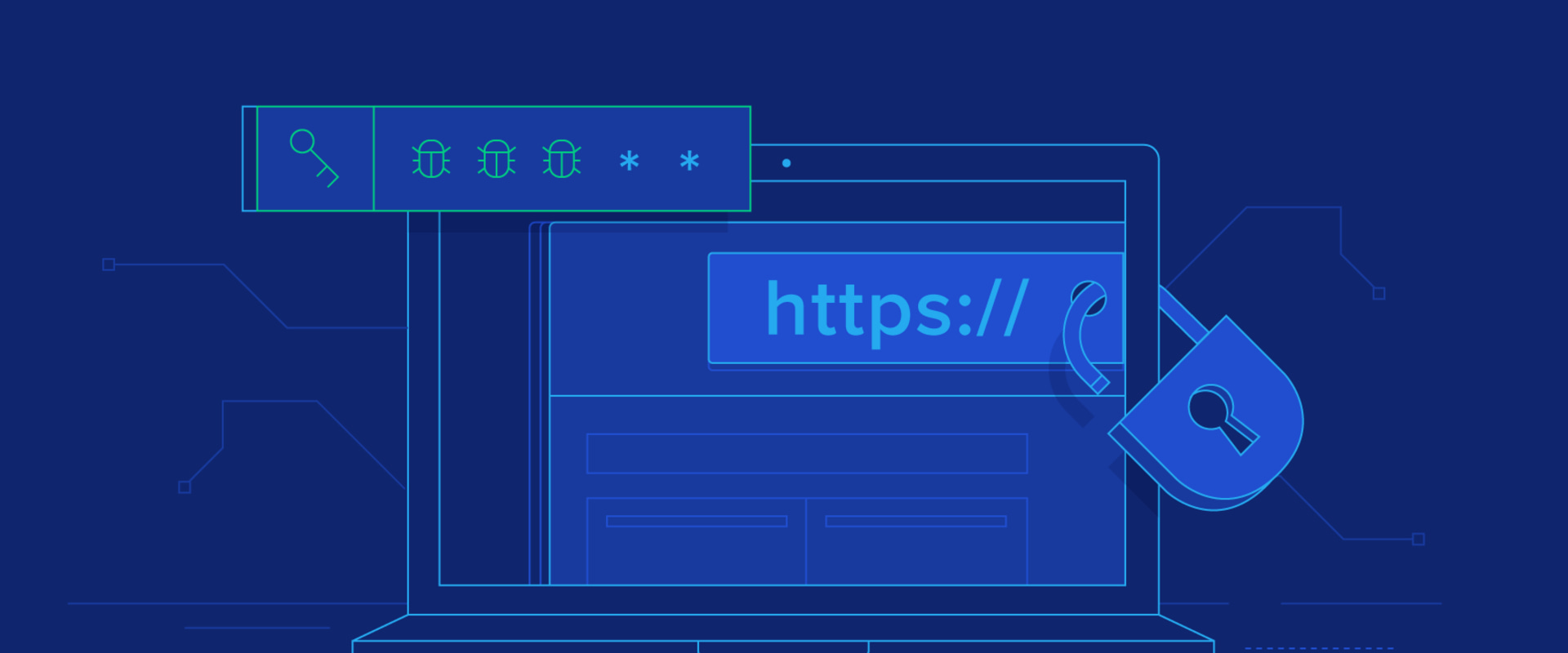Application security audits are essential to ensure the security of an organization's data and information systems. A comprehensive audit should involve examining the entire IT infrastructure, from the network to the application layer. It should also include assessing the security policies and procedures in place, as well as evaluating the risk management practices. By conducting an application security audit, organizations can identify potential vulnerabilities and develop strategies to prevent malicious attacks and data breaches. In this article, we will provide a comprehensive overview of application security auditing, including its objectives and scope, the steps involved in the process, and best practices for carrying out an effective audit.
We will also discuss the importance of following up with regular security assessments to ensure that your organization is always in compliance with industry standards.
What is an Application Security Audit?
An application security audit is a systematic review of an organization’s systems and applications to identify potential security risks and vulnerabilities. It involves assessing the potential for unauthorized access, data loss, and malicious attacks on the organization’s applications. The goal of an application security audit is to identify any weaknesses in the system and help the organization take steps to improve its security measures. Application security audits are conducted by security professionals with expertise in information security and IT auditing. They are often hired by organizations to assess their current security posture and make recommendations for improvements.The auditors use a variety of tools and techniques to evaluate the organization’s systems and applications, including vulnerability scanning, penetration testing, code reviews, and risk assessments.
Objectives and Scope of an Application Security Audit
The objectives of an application security audit are to identify and address any security weaknesses or vulnerabilities in the organization’s systems or applications. The scope of the audit typically includes evaluating the organization’s existing security measures, assessing the potential for unauthorized access or data loss, and identifying any areas that require improvement. The audit should also include a review of any third-party applications or services that are used by the organization. This is important because any vulnerabilities in these applications could potentially be exploited by attackers.Tools and Techniques for an Application Security Audit
Application security audits typically involve a variety of tools and techniques. These include vulnerability scanning, penetration testing, code reviews, risk assessments, and manual reviews.Vulnerability scanning is a process of scanning applications for known vulnerabilities. Penetration testing is a process of attempting to gain access to an application or system in order to identify potential weaknesses or vulnerabilities. Code reviews are a process of analyzing an application’s source code for potential vulnerabilities or weaknesses. Risk assessments involve evaluating the potential risk of a security incident occurring. Manual reviews involve manually inspecting the application or system for potential weaknesses or vulnerabilities.
HIPAA IT Security Best Practices
Organizations that are subject to HIPAA regulations should adhere to certain IT security best practices when conducting application security audits.This includes ensuring that all systems are properly configured and maintained, that access controls are adequate, that system logs are regularly reviewed, and that all user accounts have appropriate levels of access. Organizations should also ensure that all systems are regularly patched and updated with the latest security patches, that all software is regularly tested for vulnerabilities, that all sensitive data is encrypted, and that anti-virus software is up-to-date.
Common Pitfalls to Avoid
When conducting an application security audit, organizations should be aware of some common pitfalls. These include relying too heavily on automated tools such as vulnerability scanners, failing to adequately test third-party applications, overlooking manual inspection of the system or application code, and failing to use appropriate access controls. Organizations should also be aware of any potential legal liabilities associated with their application security audit. For example, if an organization fails to adequately protect sensitive data, they could be subject to fines or other penalties.Common Pitfalls to Avoid
When conducting an application security audit, it is important to identify and avoid common pitfalls. If not done properly, the audit can be ineffective and the resulting security measures may not be adequate.One of the most common pitfalls is not assessing all systems and applications. Even if an organization has implemented a comprehensive security policy, it is still important to assess all systems and applications individually. This allows organizations to detect any potential security vulnerabilities or weak points that may have been overlooked. Another common mistake is not using the right tools and techniques for the job.
Organizations should select security assessment tools and techniques based on their specific needs and objectives. For example, a vulnerability assessment tool should be chosen that is capable of detecting the type of security threats that are most likely to affect the system or application being assessed. Finally, it is important to be thorough when conducting an application security audit. Taking shortcuts or overlooking important details can lead to inadequate security measures and inadequate protection of data and systems.
Objectives and Scope of an Application Security Audit
Objectives and Scope of an Application Security AuditAn application security audit is designed to evaluate the security of an application or system, identify potential vulnerabilities, and recommend solutions.The audit process typically includes a review of existing security measures and an assessment of their effectiveness. The objectives of the audit are to protect the organization’s data and systems from malicious attacks, as well as to ensure compliance with any applicable regulations such as HIPAA IT security best practices. The scope of an application security audit can vary depending on the organization's needs. Generally, it involves a review of the system architecture, network configurations, authentication mechanisms, and access control policies. The audit may also include an assessment of the application's code, databases, and other components.
The goal is to identify any potential weaknesses or vulnerabilities and provide recommendations for improvement. To perform a successful application security audit, organizations must have a solid understanding of the system architecture and design, as well as the security requirements and best practices for their industry. Additionally, organizations should have a plan in place for responding to any issues identified during the audit process. This may include developing a remediation plan or implementing additional security controls.
What is an Application Security Audit?
An application security audit is a review of the security measures of a software application or system. It is carried out to ensure that the system is secure and that any vulnerabilities are identified and addressed.The purpose of an application security audit is to identify risks and threats to the system and its data, as well as to assess the effectiveness of the existing security measures. An audit can help organizations identify areas that need improvement and make sure they are compliant with industry standards and regulations. There are various types of application security audits, including vulnerability assessments and penetration tests. A vulnerability assessment is a systematic review of the system for any potential weaknesses or flaws that could be exploited. It involves identifying, analyzing, and categorizing any possible vulnerabilities in the system.
A penetration test goes further by attempting to exploit any identified vulnerabilities in order to determine the level of security of the system. Application security audits are essential for ensuring the security of data and systems. They help organizations assess the effectiveness of their existing security measures and identify areas that need improvement. Additionally, they help organizations comply with industry regulations such as HIPAA IT security best practices.
Tools and Techniques for an Application Security Audit
Application security audits are essential for ensuring the security of data and systems. To conduct a successful audit, organizations need to use the right tools and techniques.These tools and techniques include automated scans, manual reviews, vulnerability assessments, penetration tests, and more. Automated scans are an important part of a security audit. These scans detect vulnerabilities and identify areas of risk by analyzing all the files and data stored on a system. Automated scans are typically done using software tools such as vulnerability scanners and malware scanners.
Manual reviews involve a manual evaluation of the security measures in place. This includes reviewing system configuration, user access controls, authentication methods, encryption protocols, and other security-related settings. Manual reviews can also involve assessing the security policies and procedures in place to ensure they are up to date and effective. Vulnerability assessments are an important part of any security audit. These assessments identify potential risks or weaknesses in the system that could be exploited by malicious actors.
Vulnerability assessments can involve manual reviews as well as automated scans. Penetration tests are another important tool used in application security audits. Penetration tests simulate real-world attacks by attempting to exploit vulnerabilities in the system. The results of these tests can provide valuable insight into potential risks and help organizations identify areas that need improvement. Application security audits are essential for ensuring the security of data and systems. By using the right tools and techniques, organizations can assess the effectiveness of their existing security measures and identify areas that need improvement.
HIPAA IT Security Best Practices
HIPAA IT security best practices are critical for ensuring the security of data and systems. Application security audits help organizations assess the effectiveness of their existing security measures and identify areas that need improvement. To ensure the security of data and systems, it is essential to implement the following best practices:EncryptionEncryption is a process of transforming data into a secure form, making it unreadable and unusable by anyone other than those with the right credentials. Encryption ensures that data is secure while in transit and while at rest.It is recommended to use strong encryption algorithms to ensure that data is kept secure.
Access Control
Access control is the process of restricting access to certain resources or data. Access control can be implemented through authentication mechanisms, such as passwords or biometrics, or through authorization mechanisms, such as role-based access control or access control lists. It is important to implement access control to ensure that only authorized users have access to sensitive data.Authentication
Authentication is the process of verifying the identity of a user. Authentication can be implemented through username/password combinations, biometrics, or two-factor authentication.It is essential to use strong authentication mechanisms to ensure that only authorized users can access sensitive data.
Logging
Logging is an important part of application security audits. Logging helps organizations track user activity and identify potential security threats. It is important to implement logging to ensure that suspicious activity can be detected and investigated.Patch Management
Patch management is the process of applying software updates and security patches in order to protect against vulnerabilities. It is important to keep applications up-to-date with the latest security patches in order to protect against potential threats.Additionally, it is important to regularly review patch logs in order to ensure that all patches have been applied correctly. In summary, application security audits are essential for organizations to ensure the safety of their data and systems. They involve objectives and scope, tools and techniques, and best practices for HIPAA IT security that must be observed. Audits can help identify areas of concern and allow organizations to take the necessary steps to improve their security measures. Regular application security audits are important for organizations to stay up-to-date with the latest security protocols and standards.
Doing so will help to protect data and systems from potential risks. We hope this article has provided you with a comprehensive overview of application security audits and the steps you should take to ensure your organization's application security. We encourage readers to take actionable steps to ensure their organization's application security by conducting regular audits.








Leave Message